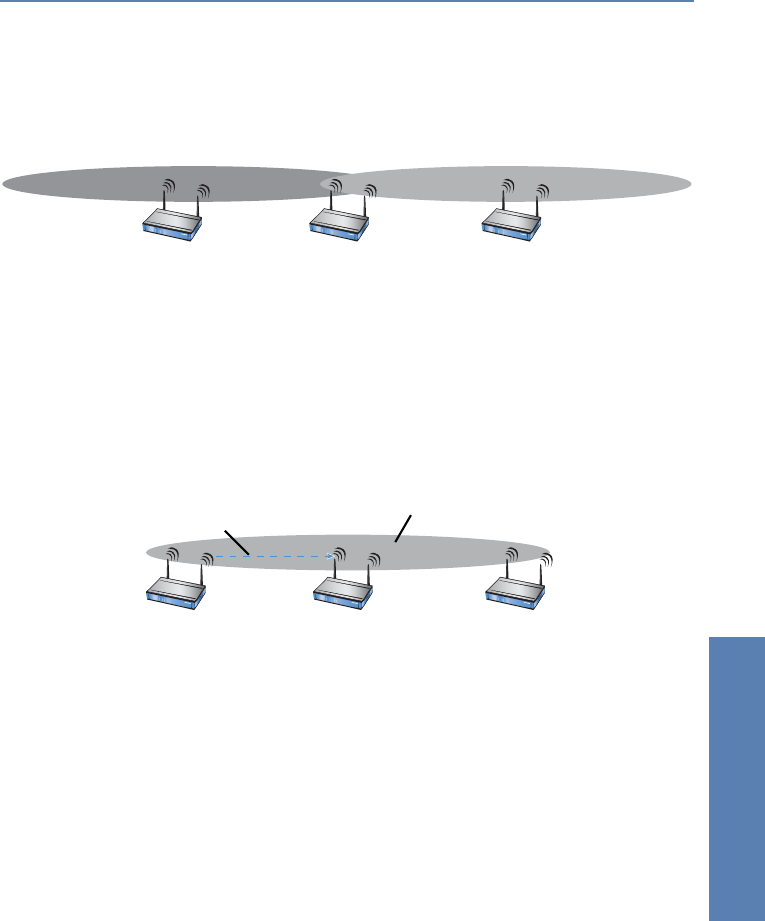
̈ Chapter 11: Wireless LAN – WLAN LANCOM Reference Manual LCOS 3.50
253
Wireless LAN – WLAN
RTS threshold
The RTS threshold prevents the occurrence of the "hidden station“
phenomenon.
Here, the three access points ³, ·, and » are positioned such that no
direct wireless connection between the two outer devices is possible. If ³
sends a packet to ·, » is not aware of this as it is outside of ³'s coverage
area. » may also try, during the transmission from ³, to send a packet to
· as well, because » has no knowledge of the medium (in this case the
wireless connection) being blocked. A collision results and neither of the
transmissions from ³ nor » to · will be successful. The RTS/CTS protocol
is used to prevent collisions.
To this end, ³ precedes the actual transmission by sending an RTS packet to
·, that · answers with a CTS. The CTS sent by · is now within "listening
distance" of », so that » can wait with its packet for ·. The RTS and CTS
signals each contain information about the time required for the transmission
that follows.
A collision between the very short RTS packets is improbable, although the use
of RTS/CTS leads to an increase in overhead. The use of this procedure is only
worthwhile where long data packets are being used and the risk of collision
is higher. The RTS threshold is used to define the minimum packet length for
the use of RTS/CTS. The best value can be found using trial and error tests on
location.
Long preamble for
802.11b
Normally, the clients in 802.11b mode negotiate the length of the preamble
with the access point. "Long preamble" should only be set when the clients
require this setting to be fixed.
Network coverage access point »Network coverage access point ³
³· »
CTS signal from ·, can also be
received by
»
RTS signal from ³ to ·
³· »
